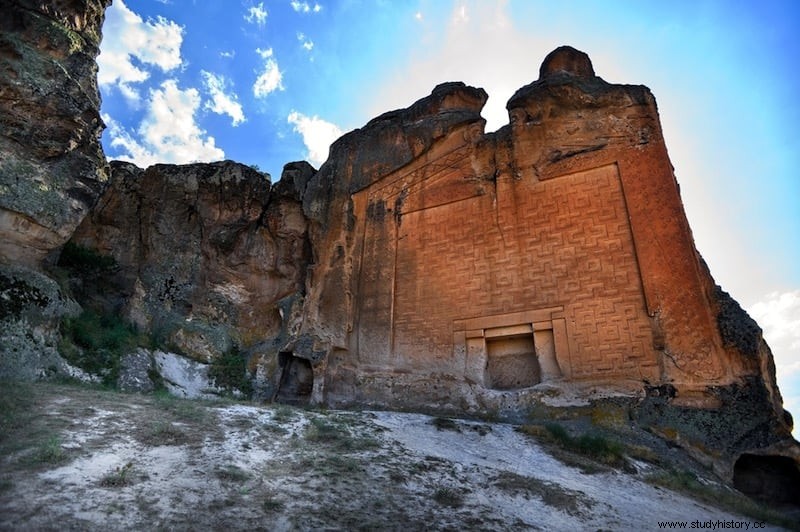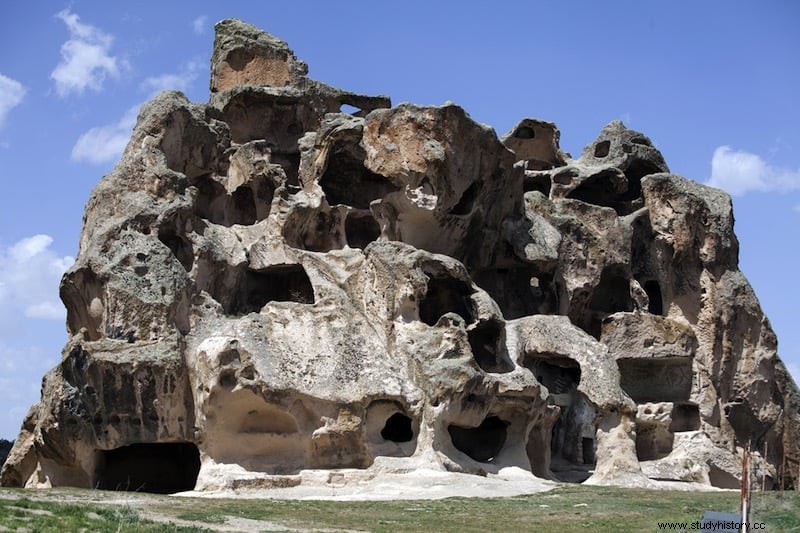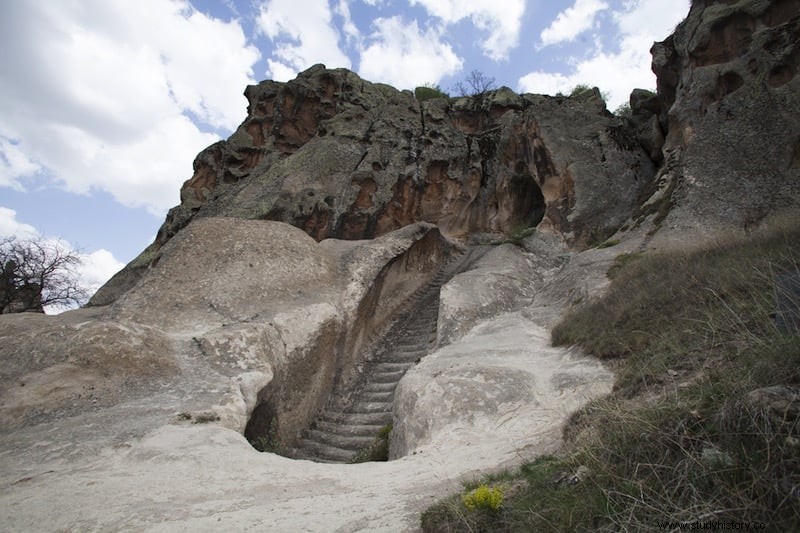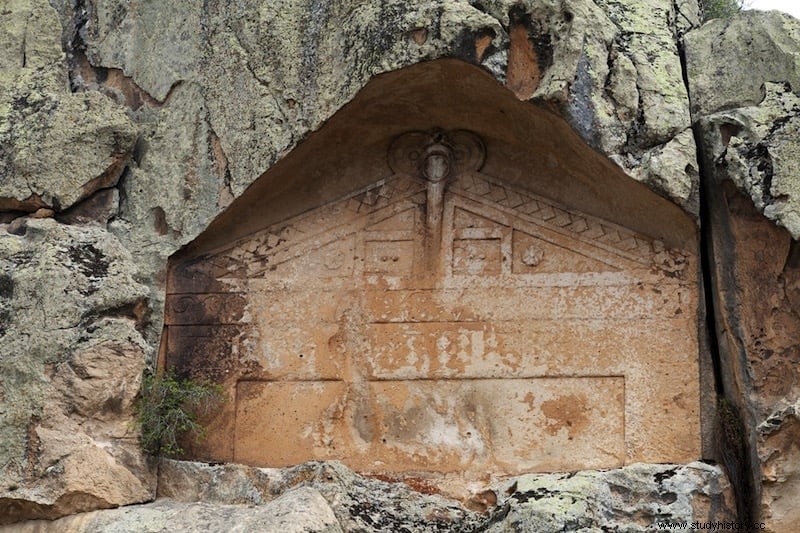In the Turkish province of Eskisehir there is a city today called Yazilikaya (literally engraved rock ), but also known as the City of Midas . It is known to have been built by the Phrygians sometime between the 8th and 7th centuries BC, although archaeologists suspect it may be much older. The most curious thing is that, although it is called a city, in reality there were never houses or dwellings there. Rather it was a religious center of the time, and that is not its only singularity.

The Phrygians were an ancient Indo-European people who, according to Herodotus, inhabited the southern Balkans. In the 8th century they emigrated to Anatolia, where they founded their capital in Gordio (where centuries later the famous episode of the cut of the Gordian knot would take place. by Alexander the Great). His influence on Greek culture is notable, especially in the musical and mythological aspects (the Great Mother Phrygia became Cybele in Greece and Rome).
The oldest mythical king of the Phrygians was Midas , a character for whom there is no archaeological evidence and who appears in later Greek myths (everything he touched turned to gold ). But there are references to a king Mita Phrygian in Assyrian sources from the 8th century BC, appearing in inscriptions indicating him as an ally of Sargon II in 709 BC. The fact is that the successive Phrygian kings were alternately called Midas or Gordias, so it does not seem unreasonable that it was a title and not a name.

Around the same time that they built their capital in Gordio, they installed their religious center in Yazilikaya. It is not known for sure if the caves, galleries and stairways were already there when they arrived. If it was already a sacred place or that aspect was conferred on it by the new inhabitants. The fact is that they turned it into a kind of sanctuary and began to adorn it with new constructions, excavated and inscribed in the rock.

One of the best known monuments of the place is the so-called Tomb of Midas . It is a monument, which has never been a tomb, formed by a facade carved into the rock 20 meters high by 16 wide. It has a niche or false door, today partially destroyed by looters (who must have thought that something had to be behind it, seeing the dedicated work) and an inscription at the top, perfectly legible and consisting of a dedication. Written in ancient Phrygian it reads by Ates, son of Arkias, to Midas . On the walls of the lower niche there is also a small inscription that reads Kill (mother ) and probably refers to the goddess Cybele, whose image may have been located here.
Which Midas the inscription refers to remains a mystery. The legendary is buried, if we listen to the sources, under a large burial mound near Gordio. And in any case, excavations carried out in the 1990s found no trace of burials here. Nor in another very similar monument located a few hundred meters away, on the same rocky outcrop.

But perhaps the strangest thing about the place is what can be seen climbing up to the acropolis, the highest point of the city . Hundreds of stairs carved into the rocks around, leading to dead ends or simply disappearing underground. Also scattered staggered altars and thrones. Possibly they are ceremonial paths, which would play a certain role in the religious cult of the place.
The stairways that go into the ground They lead to tunnels and underground chambers, interconnected with each other, which some archaeologists consider were cisterns to store water, although others believe that they were never used for this. Most are blocked by dirt and rock accumulated over the centuries, and have never been excavated.

Although there may be some kind of relationship with the numerous underground cities found in Turkey in recent decades, it must also be remembered that the Phrygians believed that their gods lived inside the mountains, and the tunnels would then be passageways to the divine world. 
The whole place is located at the top of a valley located at an altitude of 1,315 meters, and about 70 meters above its bottom. It was first excavated by W. M. Ramsay in the late 19th century, who found that the city was surrounded by a defensive wall. However, the Midas monument was already documented in 1800 by Colonel W. M. Leake, who examined and drew it while traveling with his company from Istanbul to Egypt. The drawing in question appeared in the book in which he recounted his travels, in 1824.
Excavations carried out in 1996, 2001 and 2002 also found numerous images of gods carved into niches in the rocks.
